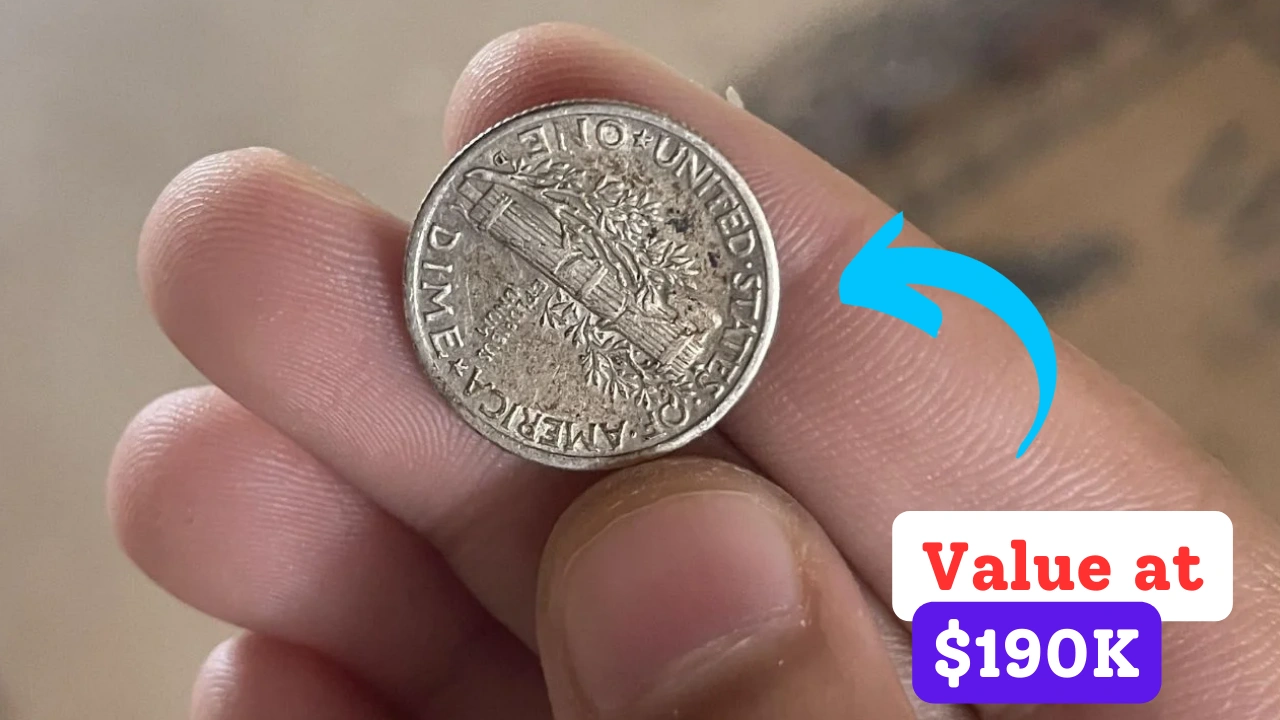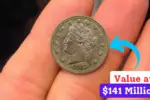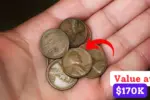The Lincoln Wheat Penny Value at $190K: The Lincoln Wheat Penny, introduced in 1909, remains one of the most famous coins in American history. While its face value is just one cent, rare versions of this penny have skyrocketed in worth, with certain examples fetching six or even seven figures at auction.
One such coin, the elusive 1943 copper penny, has been valued as high as $190K. Despite their rarity, valuable Lincoln Wheat Pennies are still discovered in circulation today, making them a thrilling find for collectors and casual enthusiasts alike.
The Story Behind the Lincoln Wheat Penny
The U.S. Mint introduced the Lincoln Wheat Penny in 1909 to commemorate the 100th anniversary of Abraham Lincoln’s birth. Designed by Victor David Brenner, it was the first U.S. coin to feature a real person rather than a symbolic figure.
Distinctive Features:
- Obverse (Front): A profile portrait of President Abraham Lincoln.
- Reverse (Back): Two wheat stalks framing the words “One Cent” and “United States of America.”
Produced until 1958, this design became a staple of U.S. currency for nearly five decades. The coin was primarily made of copper and weighed 3.11 grams except during World War II, when materials were temporarily changed.
Why Some Lincoln Wheat Pennies Are Worth a Fortune?
Not every Lincoln Wheat Penny is valuable, but a handful of rare editions and minting errors have made certain coins highly sought after. Let’s explore what makes some of these pennies worth thousands, or even millions, today.
1. Rare Variants and Minting Errors
Some Lincoln Wheat Pennies are worth small fortunes due to mistakes made during production. The most famous of these include:
- 1943 Copper Penny: In 1943, pennies were made from steel to conserve copper for the war effort. However, a few copper blanks from 1942 were mistakenly used, resulting in an extremely rare and valuable error coin. Only 20 to 40 of these pennies are believed to exist.
- 1909-S VDB Penny: The first edition of the Lincoln Wheat Penny featured designer Victor David Brenner’s initials (VDB). However, the San Francisco Mint produced only 484,000 before removing the initials, making this version highly collectible.
- 1955 Double Die Penny: A striking error caused this coin’s text and imagery to appear doubled, creating an unusual and valuable effect.
- 1922 No D Penny: In 1922, pennies were minted exclusively in Denver, but some coins were struck without the “D” mint mark, making them exceptionally rare.
2. Condition is Everything
The value of a rare penny depends heavily on its condition. Coins are graded on a scale from 1 to 70, with a perfect “70” being flawless. Even common wheat pennies in near-mint condition can sell for a premium, while rare editions in pristine shape can break records.
3. Historical and Collector Demand
The Lincoln Wheat Penny represents a major shift in American coinage, being the first to honor an actual person. Its connection to key moments in history, such as wartime resource conservation, adds to its desirability. Collectors are willing to pay enormous sums for well-preserved and rare specimens.
The 1943 Copper Penny: A Record-Breaking Discovery
Often called the “holy grail” of coin collecting, the 1943 copper penny is legendary. One specimen sold for $1.7 million at auction in 2019, but some experts believe an uncirculated version could reach over $10 million in the future.
How Did This Coin Happen?
During World War II, the U.S. Mint switched to steel pennies to save copper for military needs. However, some leftover copper blanks from 1942 were accidentally used, creating a small batch of rare 1943 copper pennies.
How to Identify a 1943 Copper Penny?
- Weight Test: Copper pennies weigh 3.11 grams, while 1943 steel pennies weigh only 2.7 grams.
- Magnet Test: Steel pennies are magnetic; copper pennies are not. If your 1943 penny sticks to a magnet, it’s steel and not valuable.
- Professional Appraisal: If you think you’ve found one, have it authenticated by a reputable grading service like PCGS or NGC.
Could a Valuable Lincoln Wheat Penny Still Be in Your Pocket?
Yes! Many valuable Lincoln Wheat Pennies are still out there, hidden in old jars, forgotten collections, or even in everyday pocket change. People often overlook their worth, so it’s always worth checking your pennies carefully.
How to Spot a Rare Penny?
- Check the Date and Mint Mark: Rare dates include 1909-S VDB, 1914-D, 1922 No D, 1943 copper, and 1955 double die.
- Look for Errors: Coins with doubling, missing mint marks, or other oddities may be valuable.
- Weigh Your Coin: Use a precise scale to check if it matches the expected weight.
- Avoid Cleaning It: Cleaning a coin can reduce its value significantly. Always leave it in its original condition.
- Get It Appraised: If you suspect your penny is rare, have it evaluated by an expert.
What to Do If You Find a Rare Lincoln Wheat Penny?
If you’re lucky enough to find a rare Wheat Penny, here’s what you should do:
- Don’t Clean It: Even minor cleaning can diminish its value.
- Authenticate It: Have a professional coin grading service verify its authenticity.
- Store It Properly: Use protective cases or coin holders to preserve its condition.
- Consider Selling It at Auction: Rare coins often fetch the best prices at reputable auction houses.
Other Valuable Lincoln Wheat Pennies to Watch For
- 1909-S VDB: Worth up to $100,000 due to its low mintage.
- 1922 No D: A Denver-minted penny without a “D” mint mark, highly rare and valuable.
- 1955 Double Die: This famous error coin ranges from $1,000 to over $100,000, depending on condition.
Final Thoughts: Your Spare Change Could Be a Treasure
The Lincoln Wheat Penny isn’t just another coin it’s a fascinating piece of history with the potential to change lives. While most pennies remain worth just one cent, some hidden treasures are still waiting to be found.
So next time you’re sorting through your pocket change, keep an eye out—your next penny might just be worth a fortune. Happy hunting!





